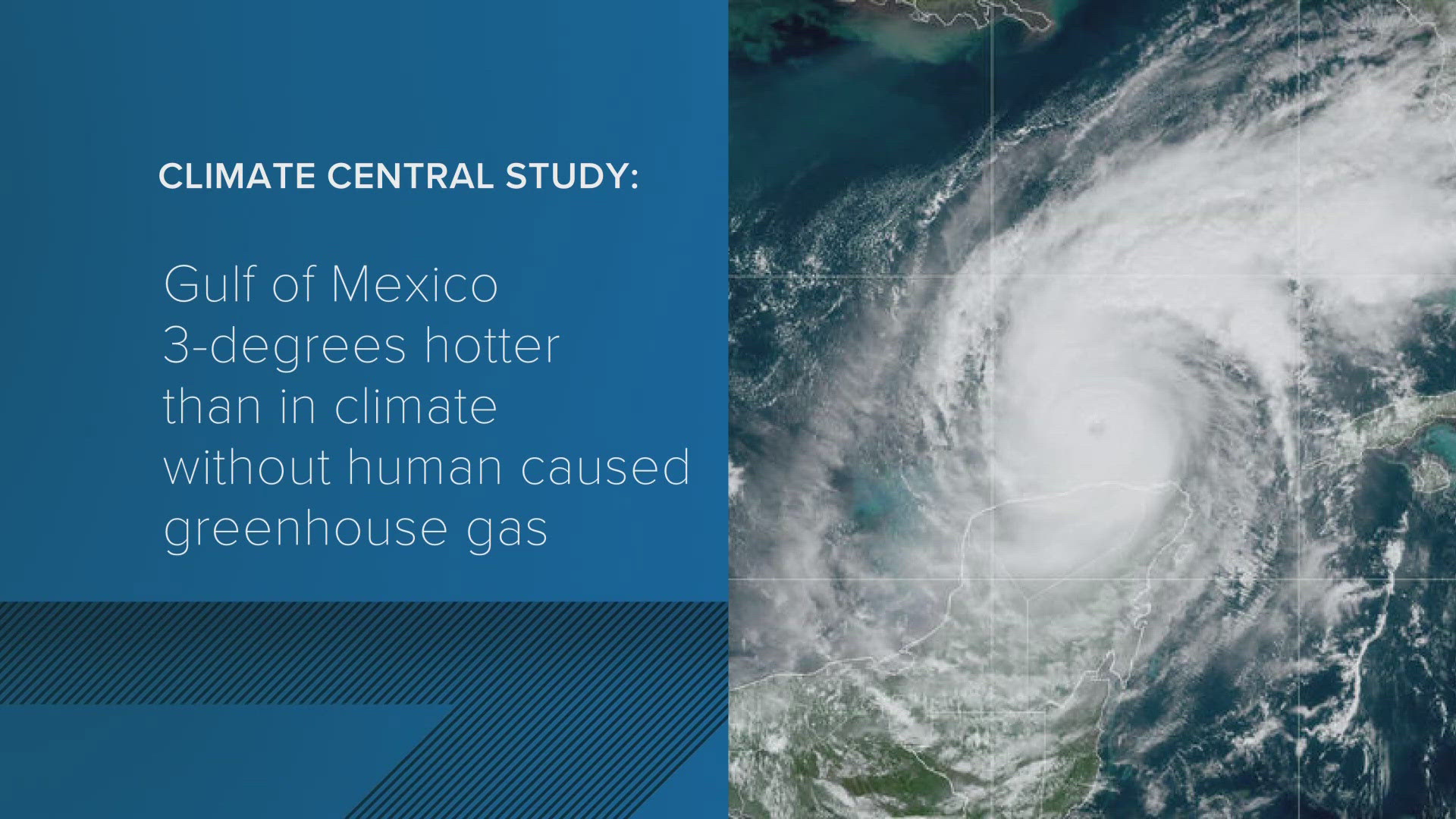WASHINGTON — Hurricane Milton hasn’t hit Florida yet, but it’s already in the record books.
It’s the strongest hurricane ever spawned in the Gulf of Mexico this late in the season, and it’s the third fastest 24-hour intensification of a storm on record.
Climate scientists report that numerous elements of Climate Change helped make Milton, and Hurricane Helene before it, the storms they developed into.
Climate change has not produced more hurricanes this season, but the storms that have spun up have been more powerful and more destructive due to climate factors, scientists say.
A key element is the abnormally high water temperature in the Gulf of Mexico and Atlantic Ocean. The Gulf has areas near 90 degrees.
“We look out in the Gulf of Mexico right now, we see extremely warm sea surface temperatures, near record sea surface temperatures,” said Dr. Daniel Gilford, a researcher at Climate Central.
Gilford points to Climate Central research showing the gulf is now 3 degrees hotter than it would be without the greenhouse gas emissions that produced climate change.
“We know that hurricanes operate a lot like heat engines, almost a heat engine in a car, they need some sort of fuel source to be able to spin, and the warmer the sea surface temperatures that are underlying these storms get, the more likely these storms are to intensify rapidly," Gilford said.
Wind and storm surge are only part of the story, according to scientists. Catastrophic amounts of rain seen in North Carolina during hurricane Helene just 12 days ago are also linked to climate change.
“An increase in the temperature of the atmosphere means that more water is evaporating off the ocean surface, adding to the water in the sky. What goes up must come down. That means that these hurricanes can hold a lot more moisture," Gilford said.
Preliminary data from U.S. Department of Energy’s Lawrence Berkeley National Laboratory link climate change to 50% more rainfall from Helene, according to Dr. Michael Wehner who conducted the analysis.
“That's the bottom line. Climate change exacerbated the rainfall, which then exacerbated the flooding, which exacerbates the suffering of the people impacted by it," Wehner said.
“Not only is there more moisture in the warmer atmosphere, there's more energy. And a little bit of wind speed change actually increases the vertical motion of the storm by quite a bit, and so the storm is more efficient at raining out the available moisture.”
Wehner noted that higher levels in the atmosphere are cooler, which causes the water in saturated warm air to condense and fall as heavy rain. He said North Carolina’s high mountains amplified the effect.

